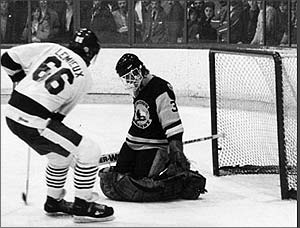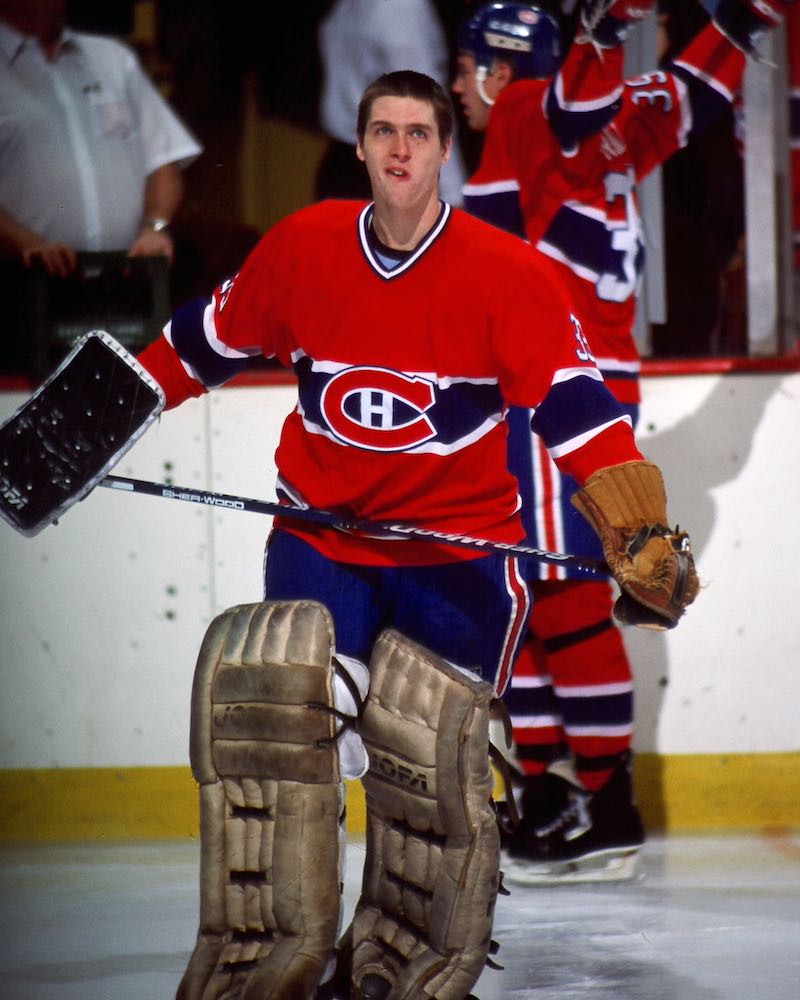Tretiak always stressed that conditioning is a top priority for a goalie. His preparation techniques are probably now copied by the majority of goaltender coaches, no?
Tretiak played in the same equipment or worse as his Canadian counterparts, because USSR teams weren't as well supplied as the Canadian teams, yet he played the butterfly all the time.
Well, like I said, goaltenders of that era weren't ignorant.
Half an hour of Tretiak highlights here:
Clearly, Tretiak was well aware of the butterfly as a save selection. And considering he was one of the most famous goaltenders in the world, so was anyone else who watched him play.
Likewise, anyone who watched Tony Esposito starring in the NHL was fully aware that the butterfly was a useful save selection.
So why did goalies of that era not use it all the time? I would submit that the answer is in the video you posted:
Look at how Tretiak's pads are positioned in this butterfly drill -- face down on the ice, with his leg on top. Modern goalie pads rotate forward so that the knee sinks into a "landing gear" flap
which did not exist in 1970s-style goalie pads.
Even the king of the butterfly Patrick Roy grew up doing a Tretiak-style butterfly with pads face-down against the ice.
Note that if you watch early video of Roy, he uses this as a save selection but also quite consistently uses pad stacks and other standup-style techniques as well. But by the time he came into the NHL (this image is from 1985) there are landing gear flaps sticking out of the upper roll area in order to catch him safely in a
modern butterfly position, with pads facing forward:
And sure enough, within a few short years Roy had perfected the butterfly with forward-facing pads and his knees cradled in his landing gear --
this was not possible before the advent of modern pad design. It's also important to note that during the same period of time, goalie pads and chest protectors began to be manufactured with 1980s-style polymer plastics which weighed a fraction of the old leather/stuffing pads, and goalie masks went through a transition that protected the throat more than ever before.
By the time you get to the modern day, goalie pads have nearly as much protection in the landing-gear area as they do on the front face.
This is absolutely vital to the modern butterfly -- it is the reason goalies are able to drop their knees to the ice 50 times a game without breaking a kneecap. It also takes a lot of the force off their hips and thighs, preventing wear-and-tear injuries that would inevitably result from playing this style in old school pads.
Just to reiterate -- pre-1990s goalies spent their entire youth and young adulthood on the ice. They were not ignorant of the notion that you could drop to the ice to make a save. There was a very good reason that nobody (not even pioneers like Tretiak and Roy) did this as a full-time style until the mid 1980s.






